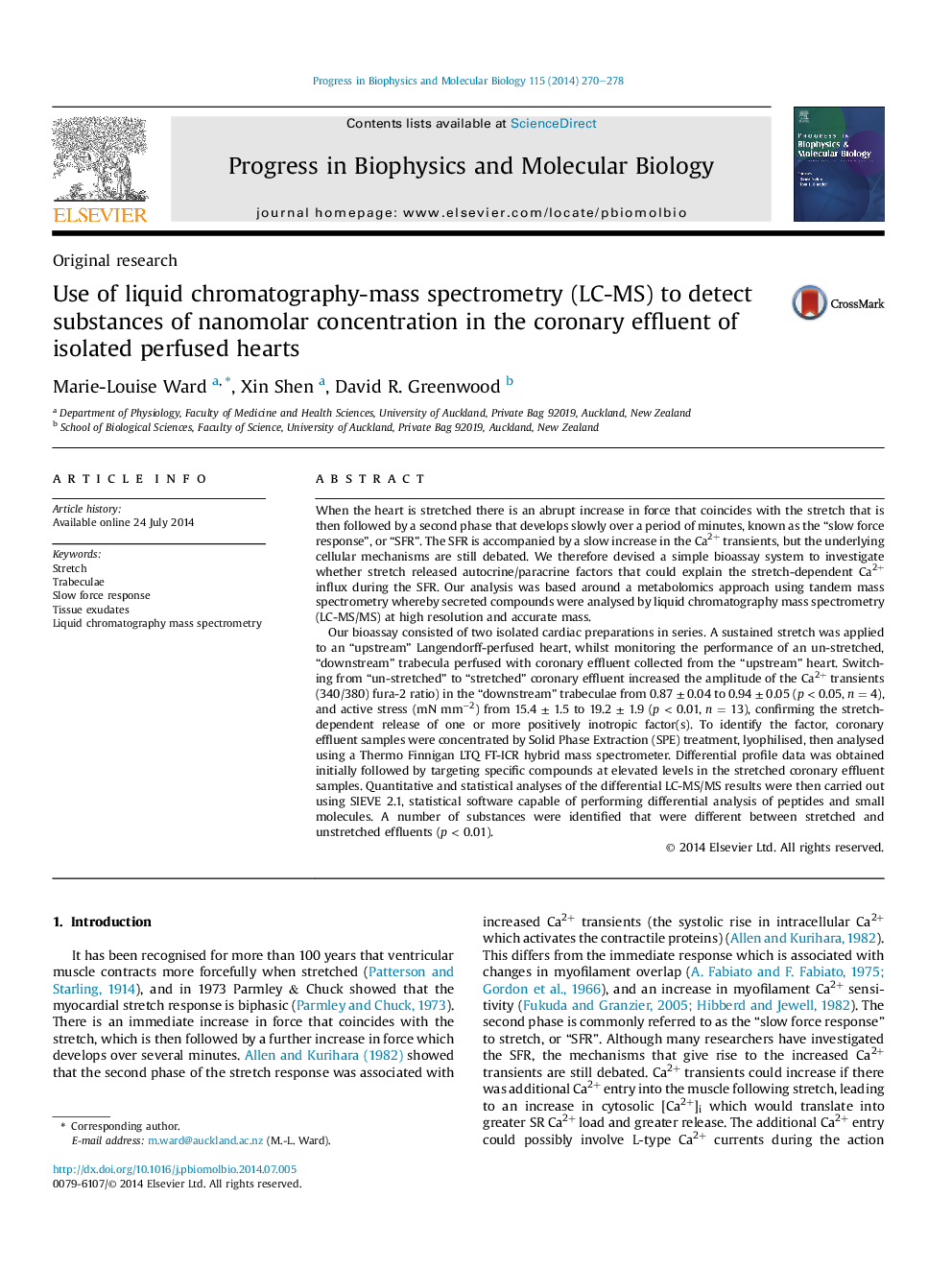| Article ID | Journal | Published Year | Pages | File Type |
|---|---|---|---|---|
| 8401264 | Progress in Biophysics and Molecular Biology | 2014 | 9 Pages |
Abstract
Our bioassay consisted of two isolated cardiac preparations in series. A sustained stretch was applied to an “upstream” Langendorff-perfused heart, whilst monitoring the performance of an un-stretched, “downstream” trabecula perfused with coronary effluent collected from the “upstream” heart. Switching from “un-stretched” to “stretched” coronary effluent increased the amplitude of the Ca2+ transients (340/380) fura-2 ratio) in the “downstream” trabeculae from 0.87 ± 0.04 to 0.94 ± 0.05 (p < 0.05, n = 4), and active stress (mN mmâ2) from 15.4 ± 1.5 to 19.2 ± 1.9 (p < 0.01, n = 13), confirming the stretch-dependent release of one or more positively inotropic factor(s). To identify the factor, coronary effluent samples were concentrated by Solid Phase Extraction (SPE) treatment, lyophilised, then analysed using a Thermo Finnigan LTQ FT-ICR hybrid mass spectrometer. Differential profile data was obtained initially followed by targeting specific compounds at elevated levels in the stretched coronary effluent samples. Quantitative and statistical analyses of the differential LC-MS/MS results were then carried out using SIEVE 2.1, statistical software capable of performing differential analysis of peptides and small molecules. A number of substances were identified that were different between stretched and unstretched effluents (p < 0.01).
Related Topics
Life Sciences
Biochemistry, Genetics and Molecular Biology
Biophysics
Authors
Marie-Louise Ward, Xin Shen, David R. Greenwood,
